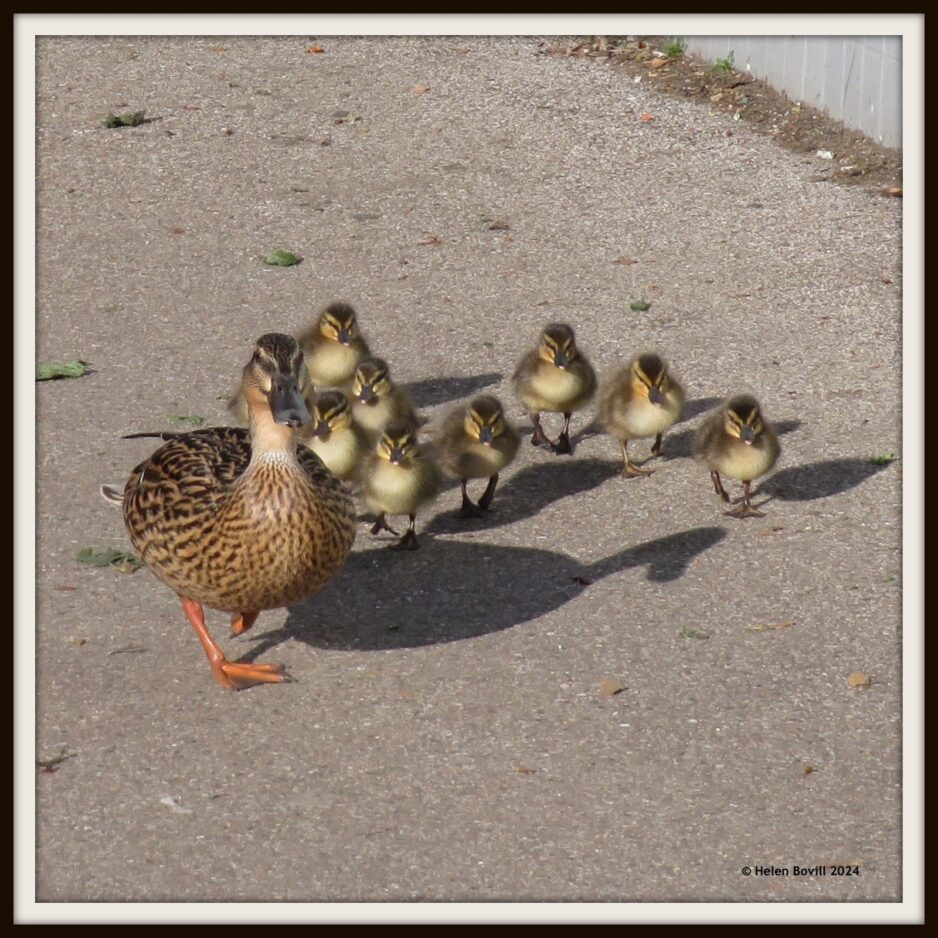It might seem strange to be starting this report with a photo that was so obviously NOT taken in the cemetery. After all, this is about the cemetery wildlife! However, I’m pretty certain that this Mallard and her nine ducklings had just come out of the cemetery and were heading down Princes Avenue and towards Pearson Park, which is less than half a mile from the cemetery. There was no doubt in my mind that this was where she was heading.
If I’d been at that point on Spring Bank West just a minute earlier then I’m sure I would have seen them coming out of the cemetery. One of our volunteers told me he’s occasionally seen a Mallard in there. Also, a few years ago a regular cemetery user showed me some footage he’d taken of a Mallard leading some ducklings through the cemetery. I knew this was genuine because I recognised one of the headstones in the video.
Obviously I wasn’t going to just walk past – I decided to escort them to the park, making sure I kept a respectful distance to avoid scaring them.

I kept them on the footpath until she decided to cross the road. I held up the traffic on one side of the road; a kind passer-by held up the traffic on the other side. Both the drivers that had to stop were smiling and one had his phone out, recording the event.
I followed her into Pearson Park – she seemed to know the way.

I then watched as she coaxed all nine ducklings into the water.
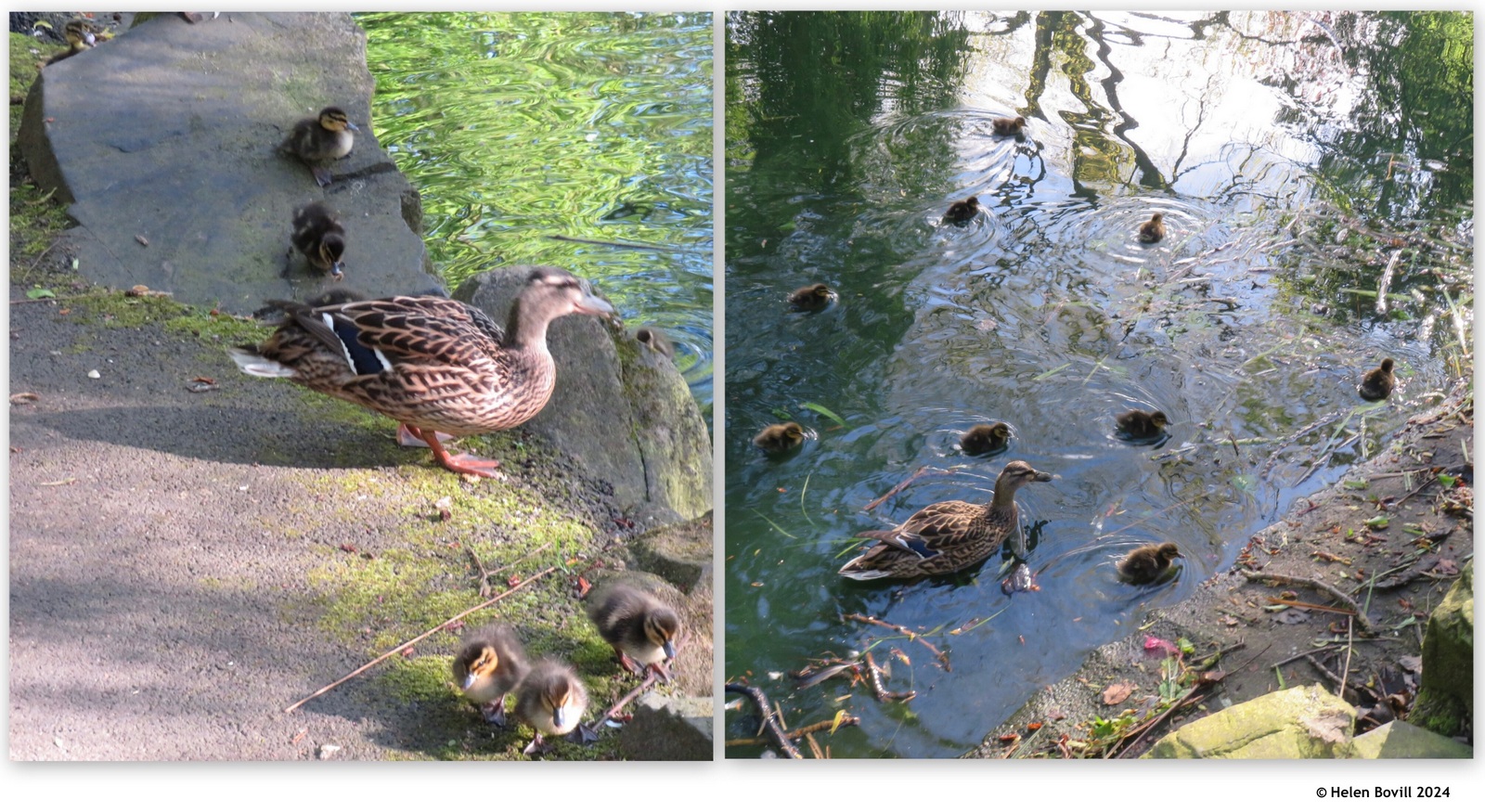
Birds
After this unexpected encounter I decided to find out a bit more about Mallards, this common duck most of us see in our local parks and take very much for granted. Although they occasionally nest in trees, they usually nest on the ground, in dense foliage to keep hidden from predators. She would have laid her eggs over a period of a few days, and then once she’d finished, she would then have started to incubate them. Incubation takes around 4 weeks, so she could have been there in the cemetery for well over a month, quietly concealed from predators who could have taken her eggs.
The ducklings all hatch within a few minutes of each other and are mobile within a few hours of hatching. These would have been less than 24 hours old, and ready to take to the water. But the cemetery has no natural source of water so they couldn’t stay there any longer.
I saw plenty of our usual birds in the cemetery in April – Blue, Great and Coal tits, Bullfinches, Chaffinches and Goldfinches, Robins, Wrens, Dunnocks, Blackbirds, Carrion Crows, Wood Pigeons and Stock Doves. Our seasonal visitors, the Chiffchaffs, were in fine and distinctive voice all month. I was very pleased to see a Mistle Thrush – I usually just see Song Thrushes in the cemetery.
Here are just a few members of the avian branch of the cemetery wildlife as they go about their daily lives.

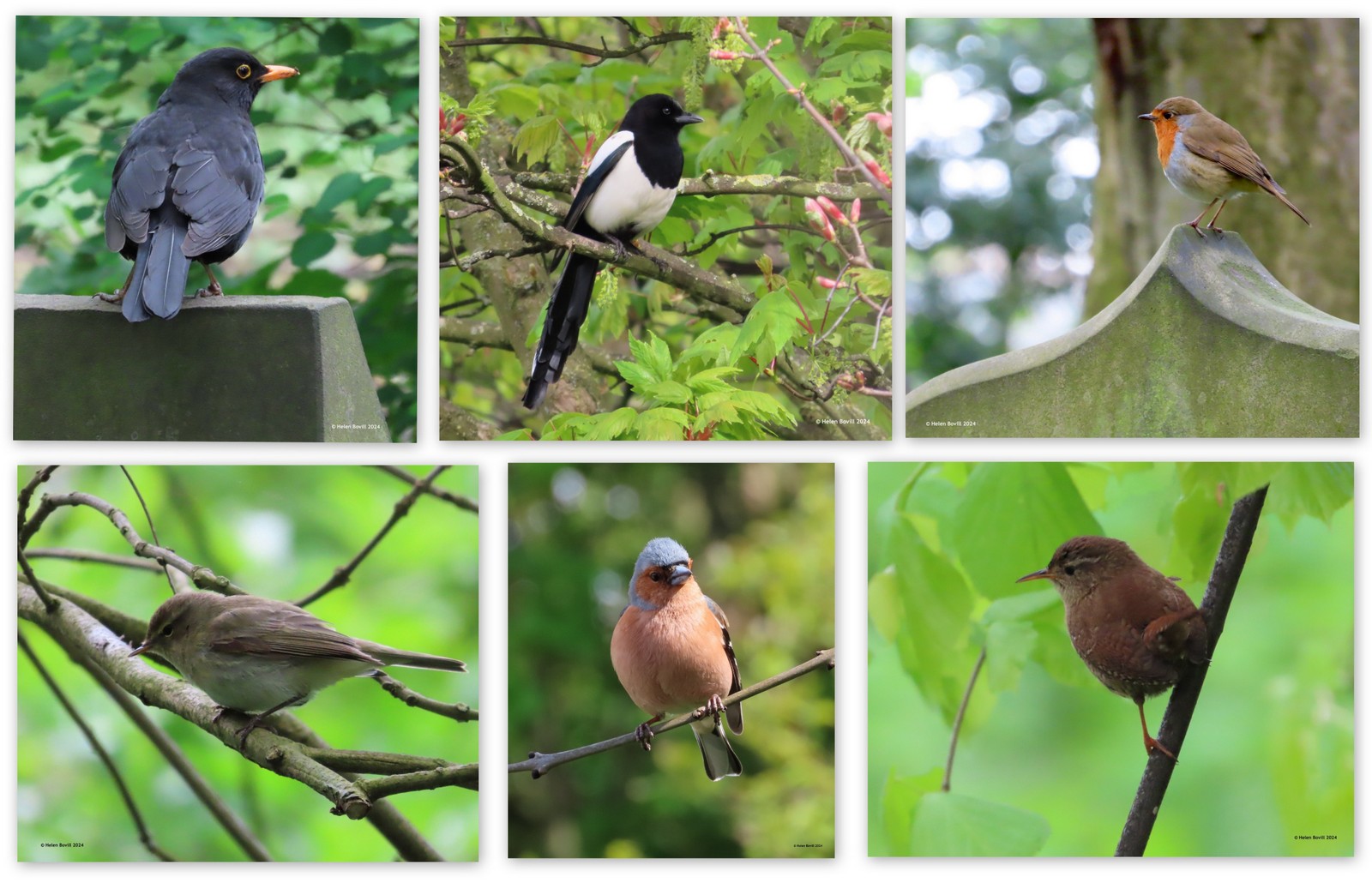
I saw several of them gathering nesting material, and I noticed some of the smaller birds checking out the nest boxes. I haven’t seen any fledgelings yet.
Insects
Butterflies
April was a very good month for butterflies, provided the days were sunny, reasonably warm and not too windy. I saw my first Speckled Woods, Large Whites, Small Whites and Green-veined Whites of the year – it’s always a delight to see this most colourful branch of the cemetery wildlife. Last to make an appearance, on the last day of the month, were the Orange Tips.

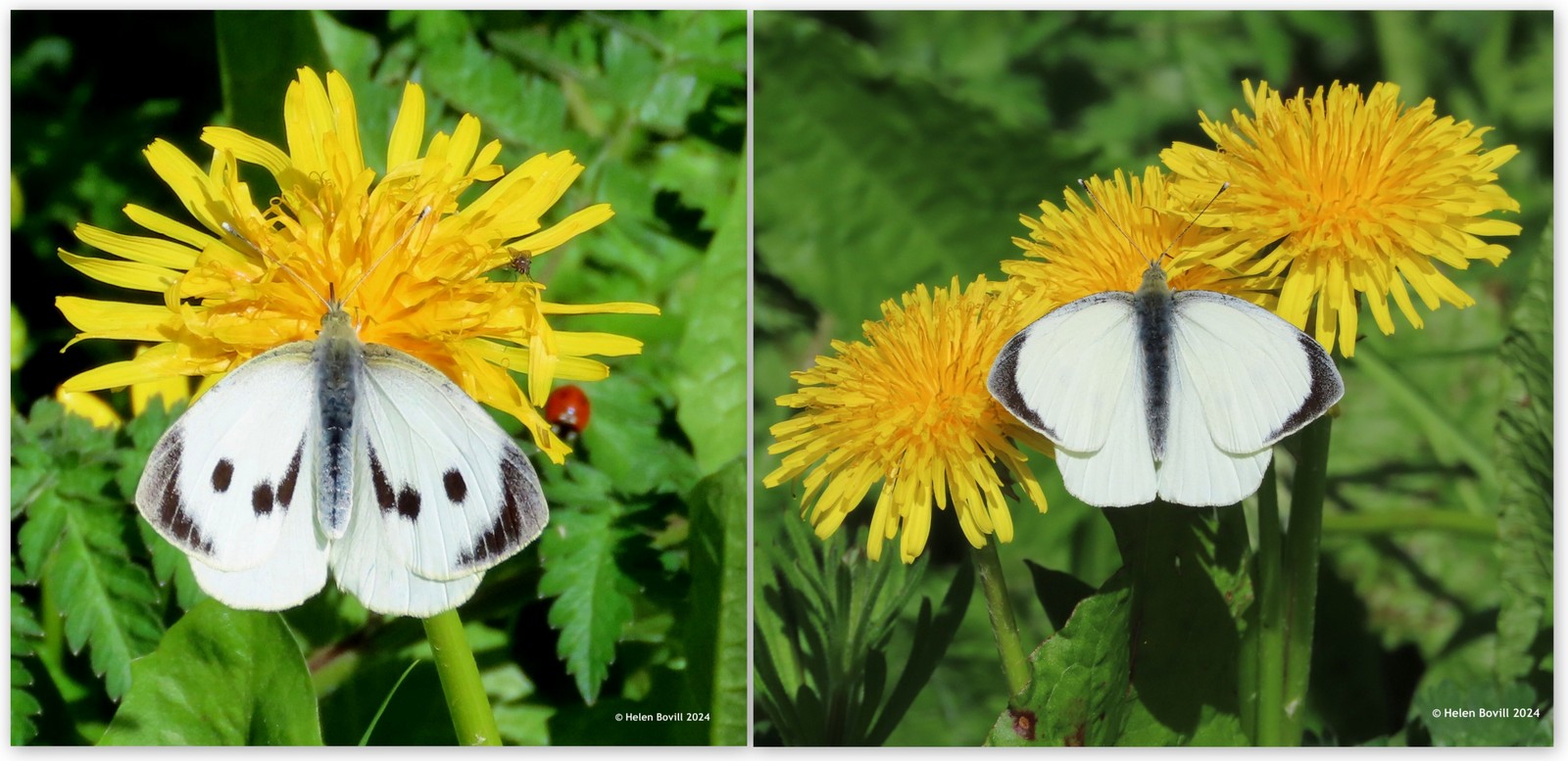
The Small White is slightly smaller and has less black markings on the edge of the upper wings. The male has one spot on each wing.
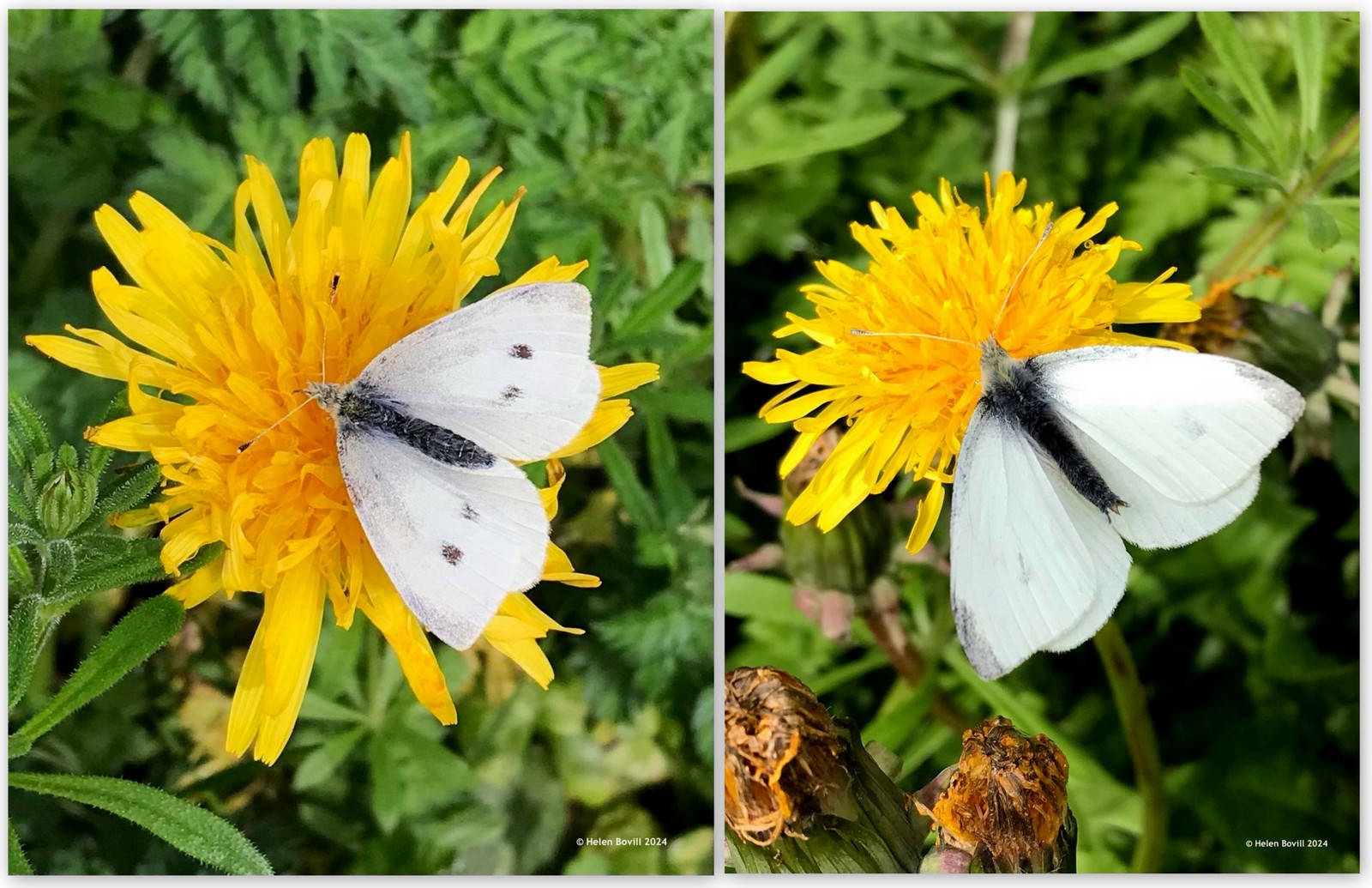
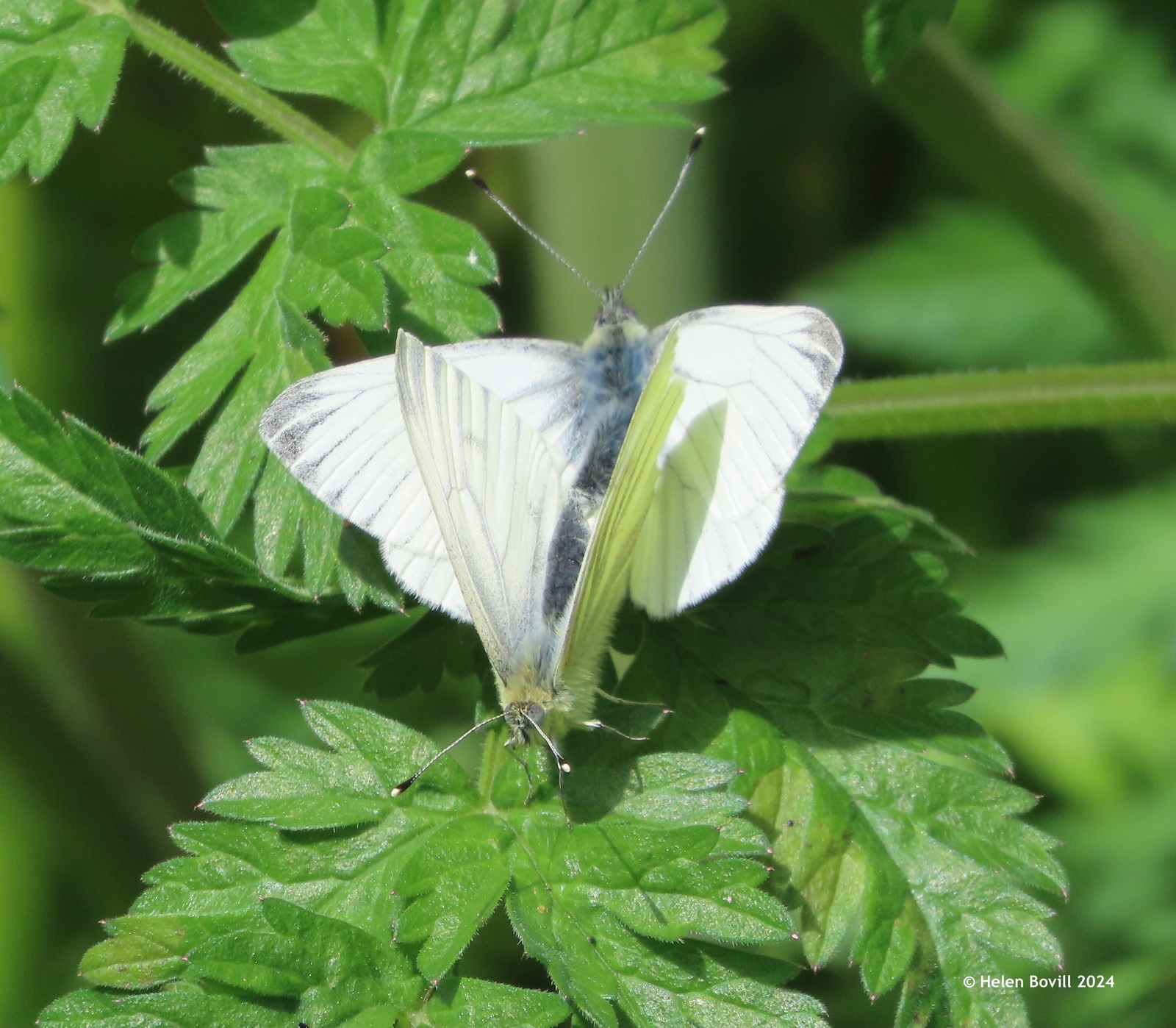
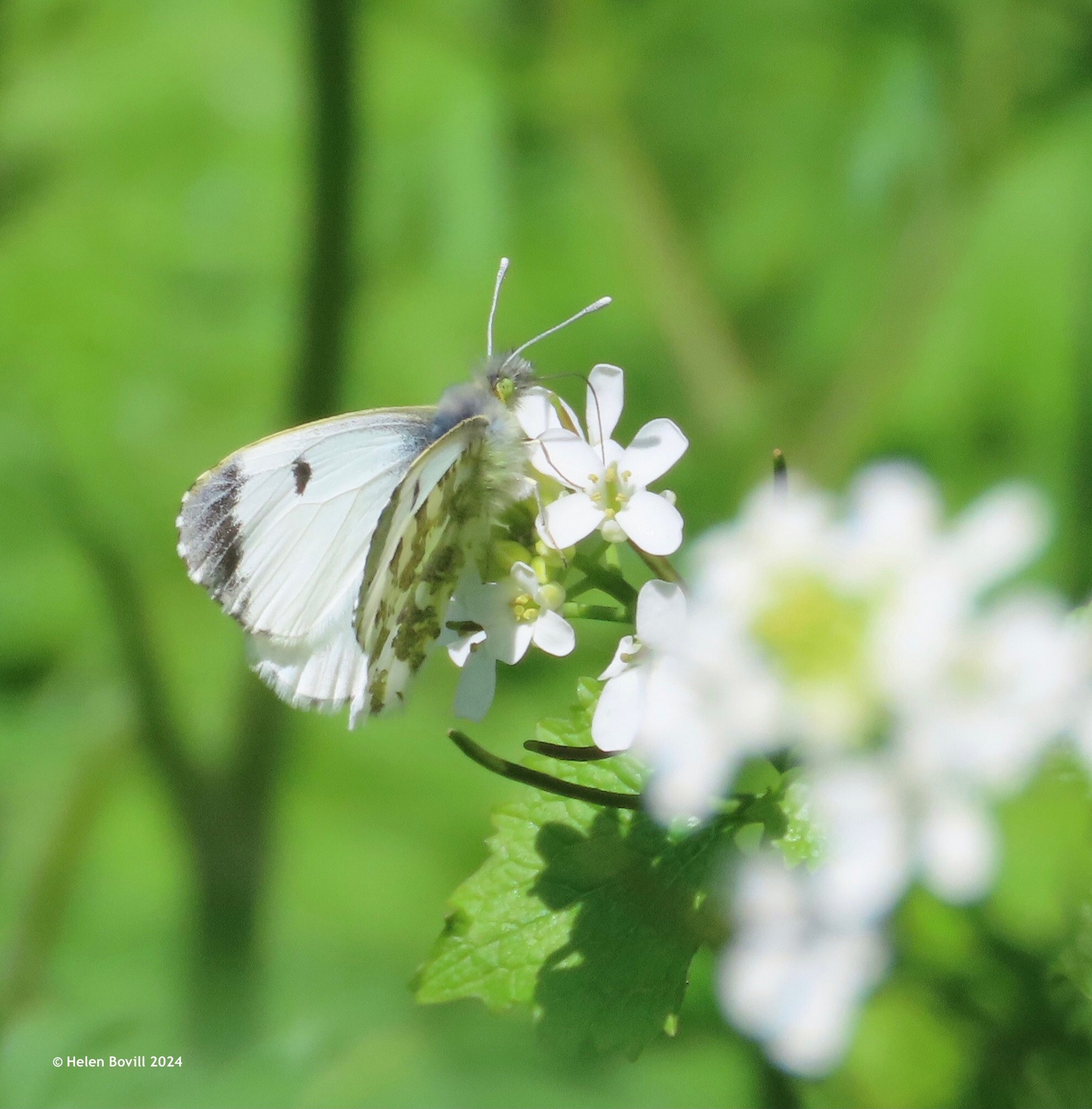
All the butterflies I’d seen for the first time in February and March also made several appearances during the month. One thing I found most surprising was the fact that although I saw my first male Brimstone of the year in mid-March, it wasn’t until mid-April that I saw my first female. However, females do emerge slightly later than the males but not usually that much later. I saw a total of ten different species of butterfly in the cemetery or on the Spring Bank West verge this month.
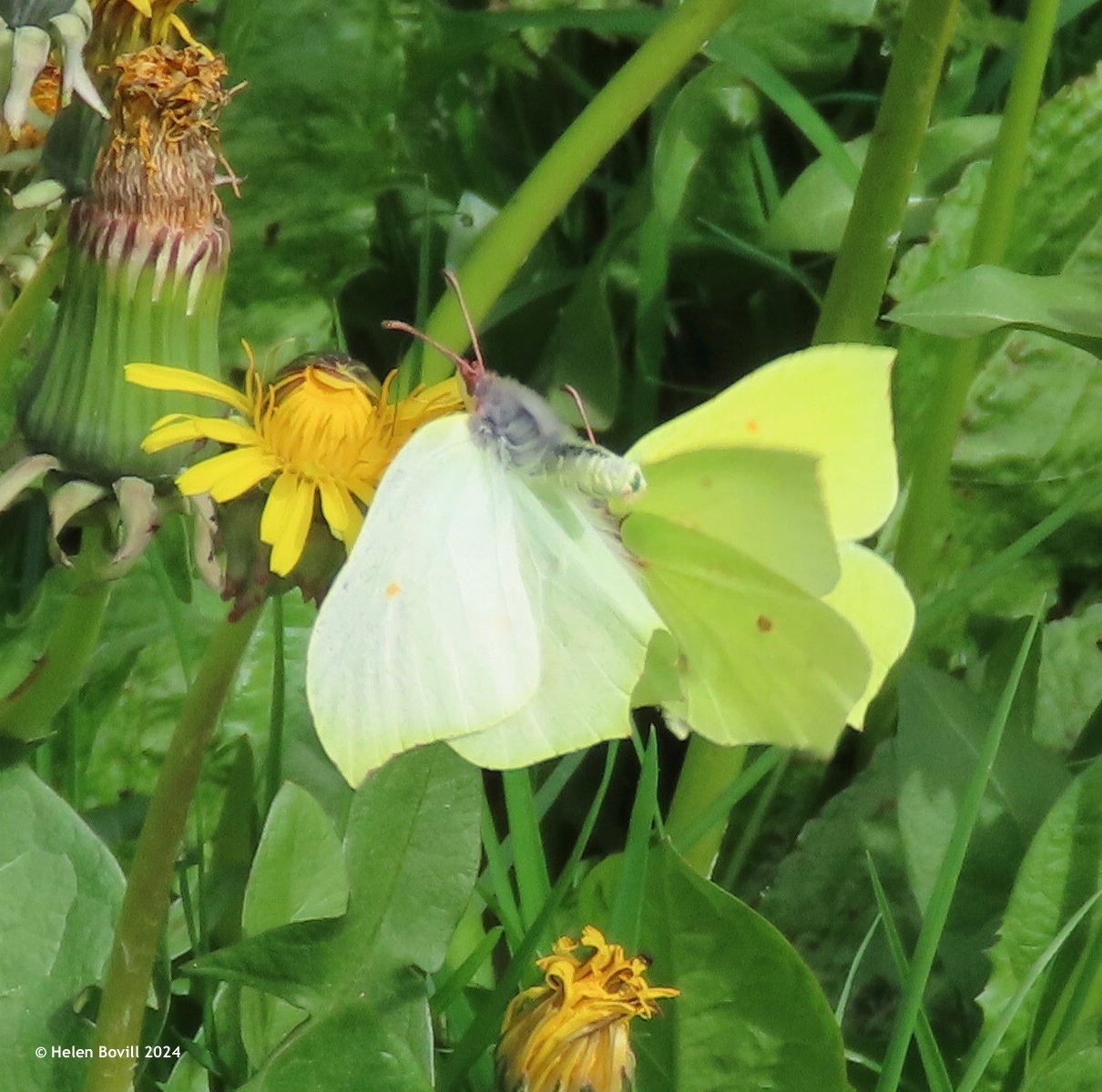
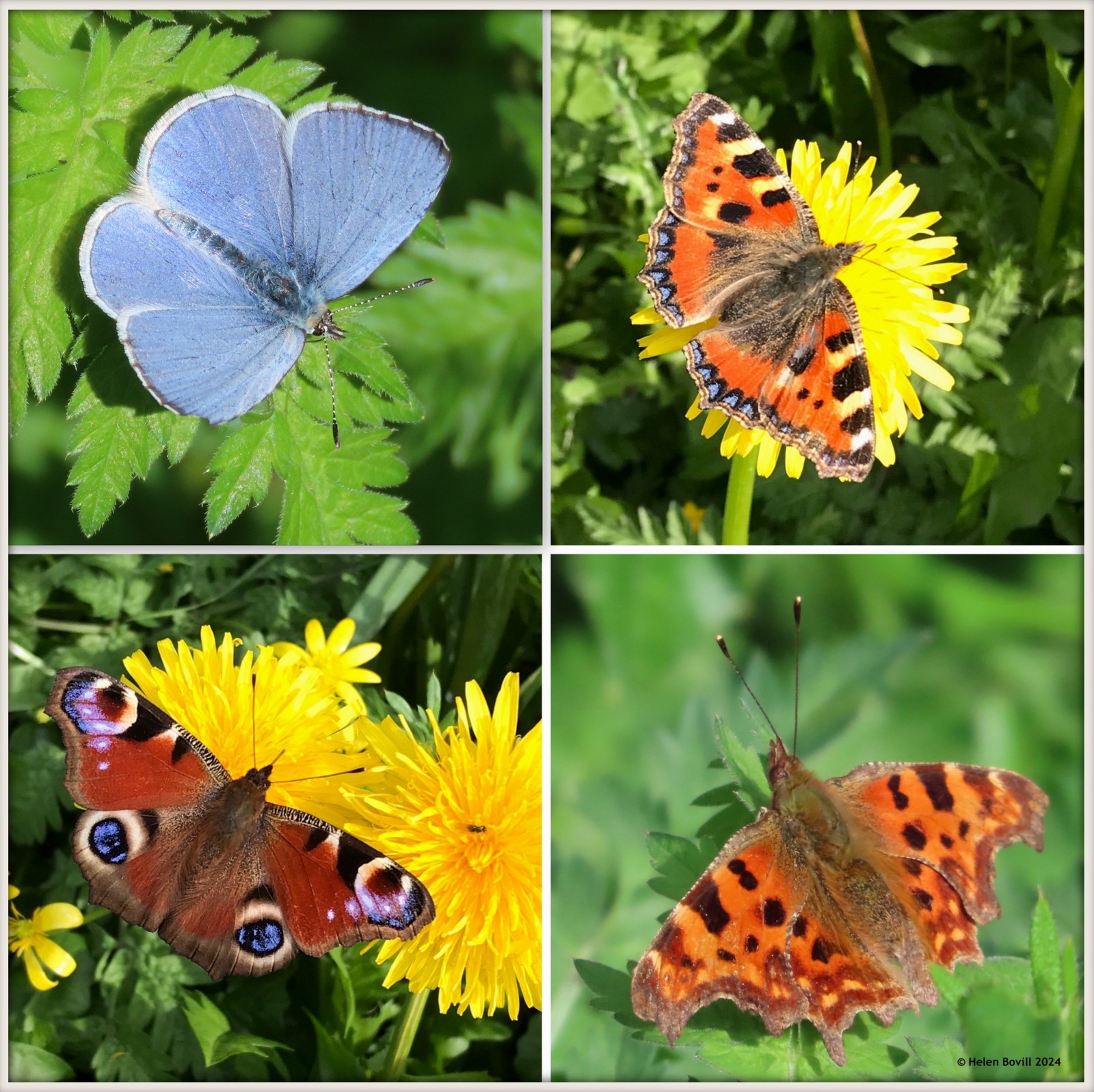
Bees, Flies and Bugs
I took part in the iNaturalist City Nature Challenge this month. Running for 4 days from 26 to 29 April, its aim was to encourage the observing and recording of nature throughout the UK. Hull took part for the first time last year and it was such a success that the city took part again this year.
Although I visited several parts of the city to see and record as many species as possible, the vast majority of my observations were of the Hull General cemetery wildlife. It made me look even more closely at all our insects, and I saw my first-ever Sun fly.
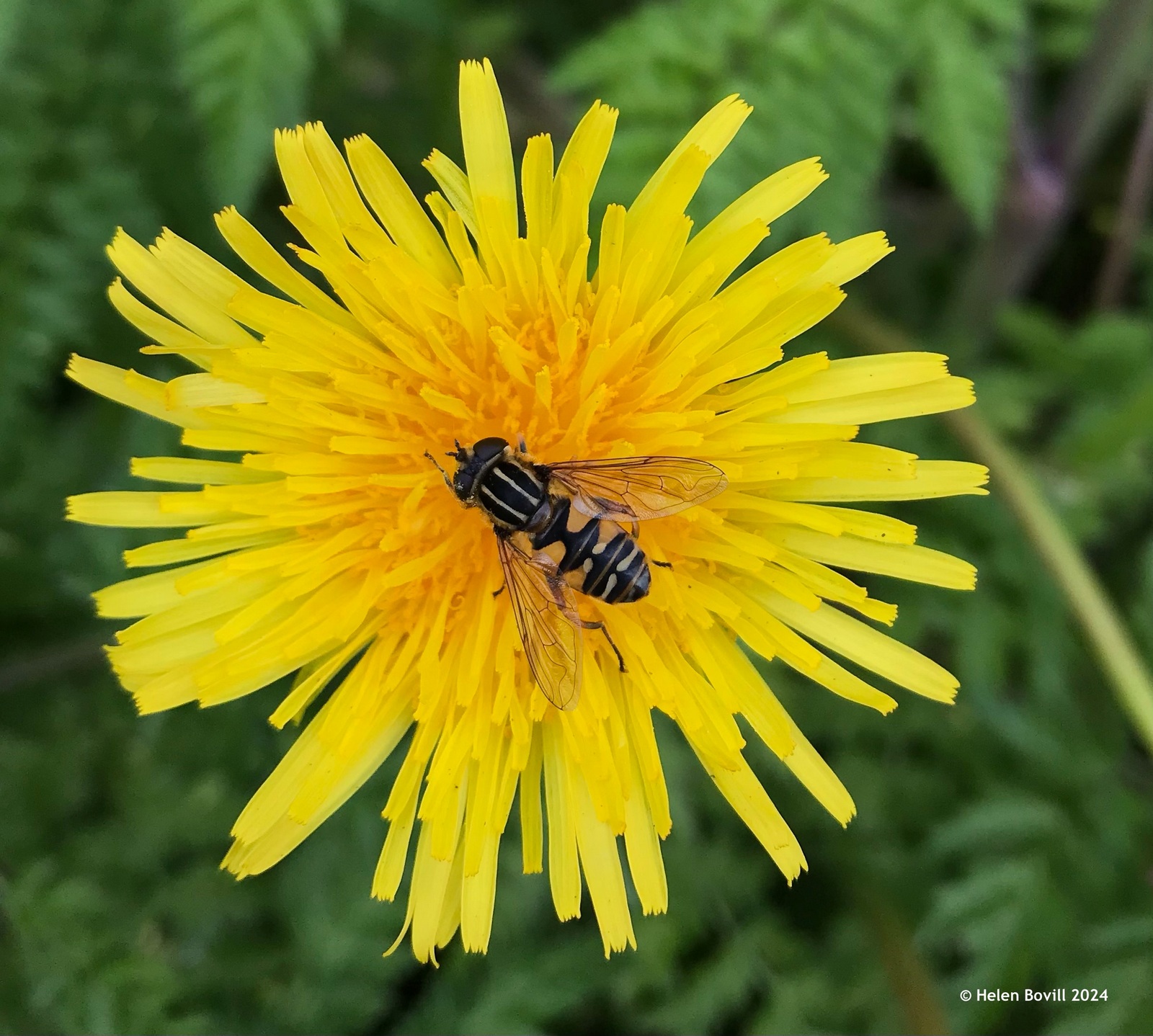
That distinctive striped head made it stand out from all the other hoverflies I saw in April. I also saw several types of bee including Red, Buff and White-tailed Bumblebees, Mining Bees and Honey Bees.
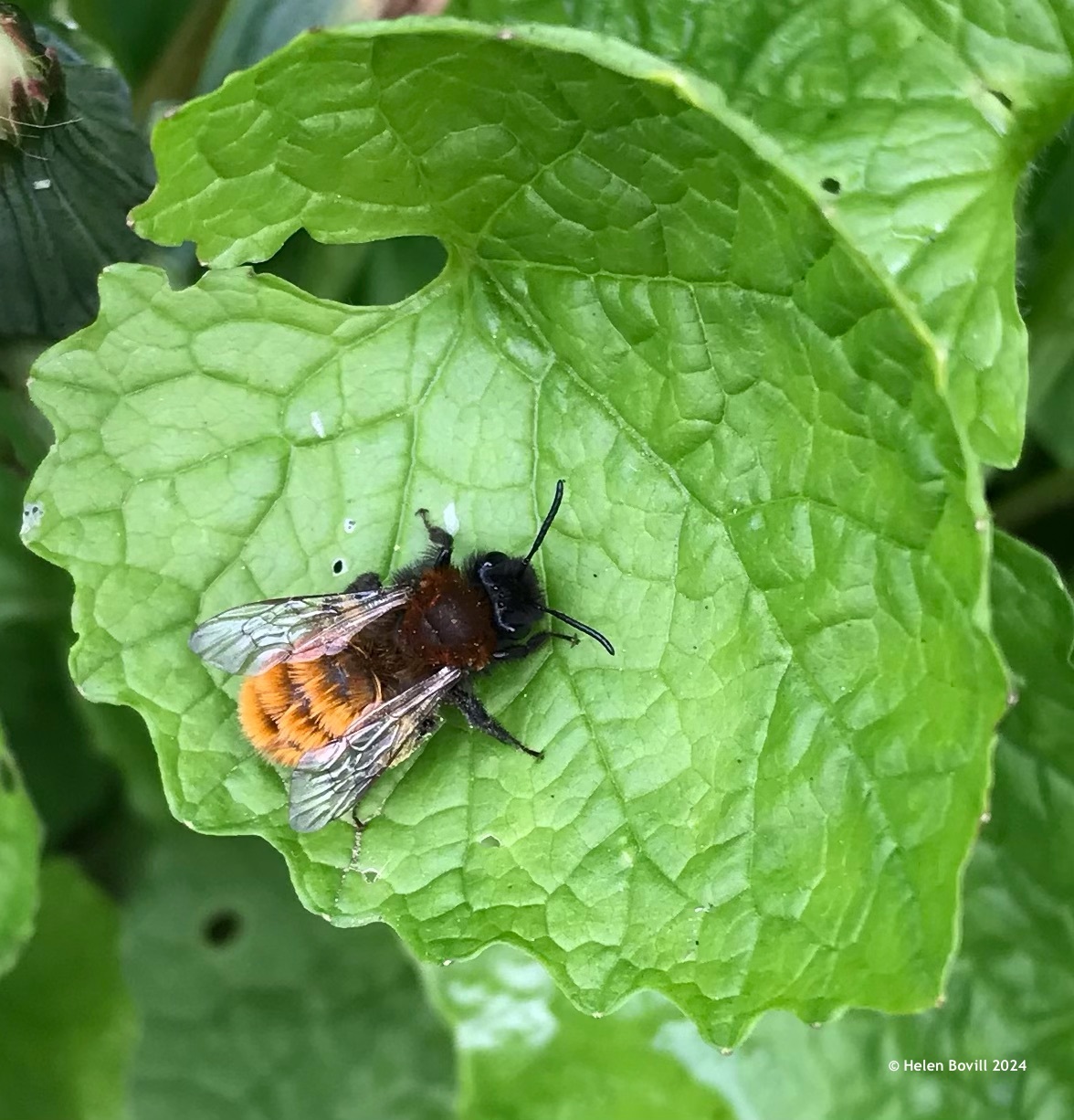
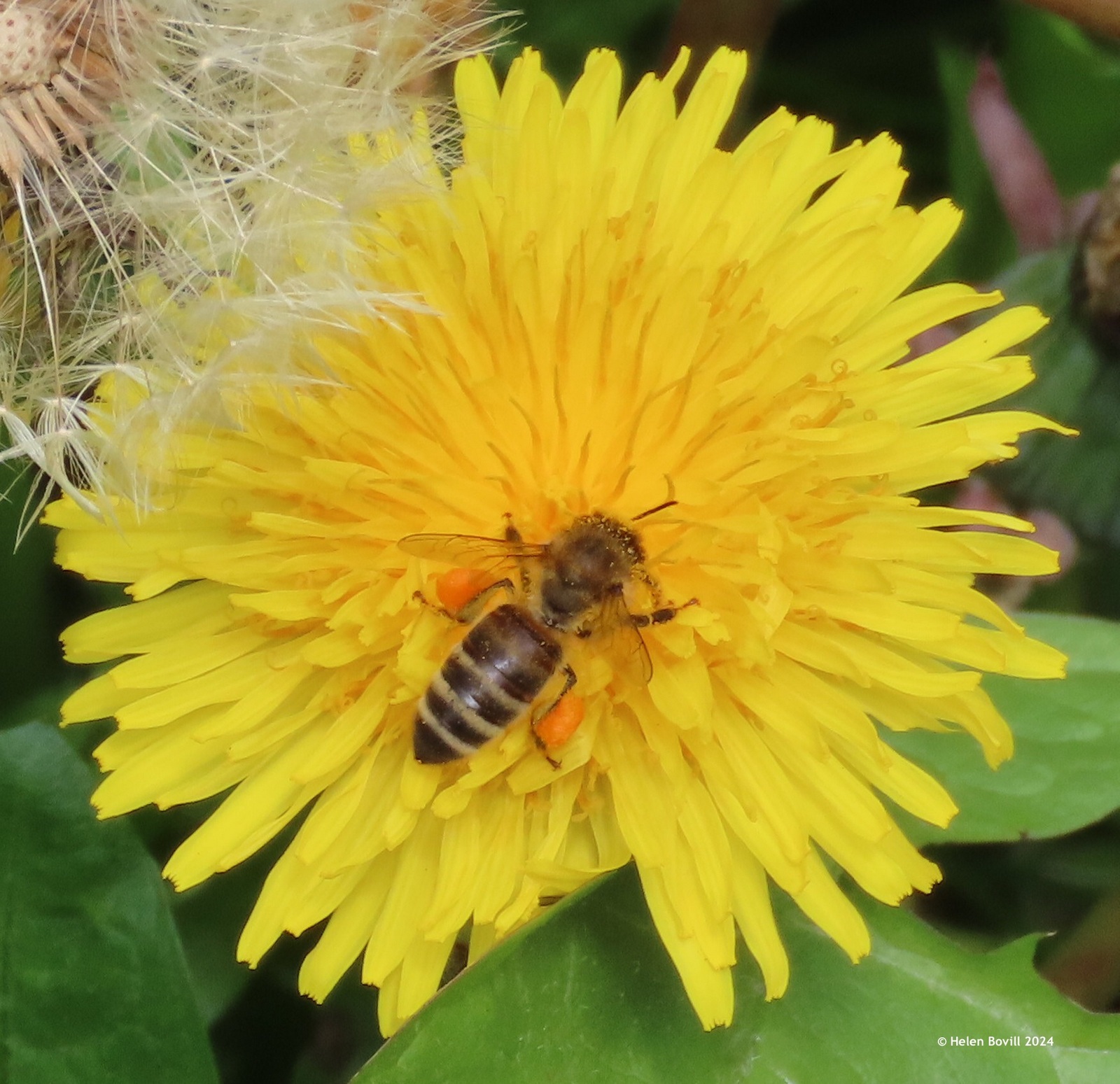
I also saw an abundance of Ladybirds – native British ones as well as Harlequins.
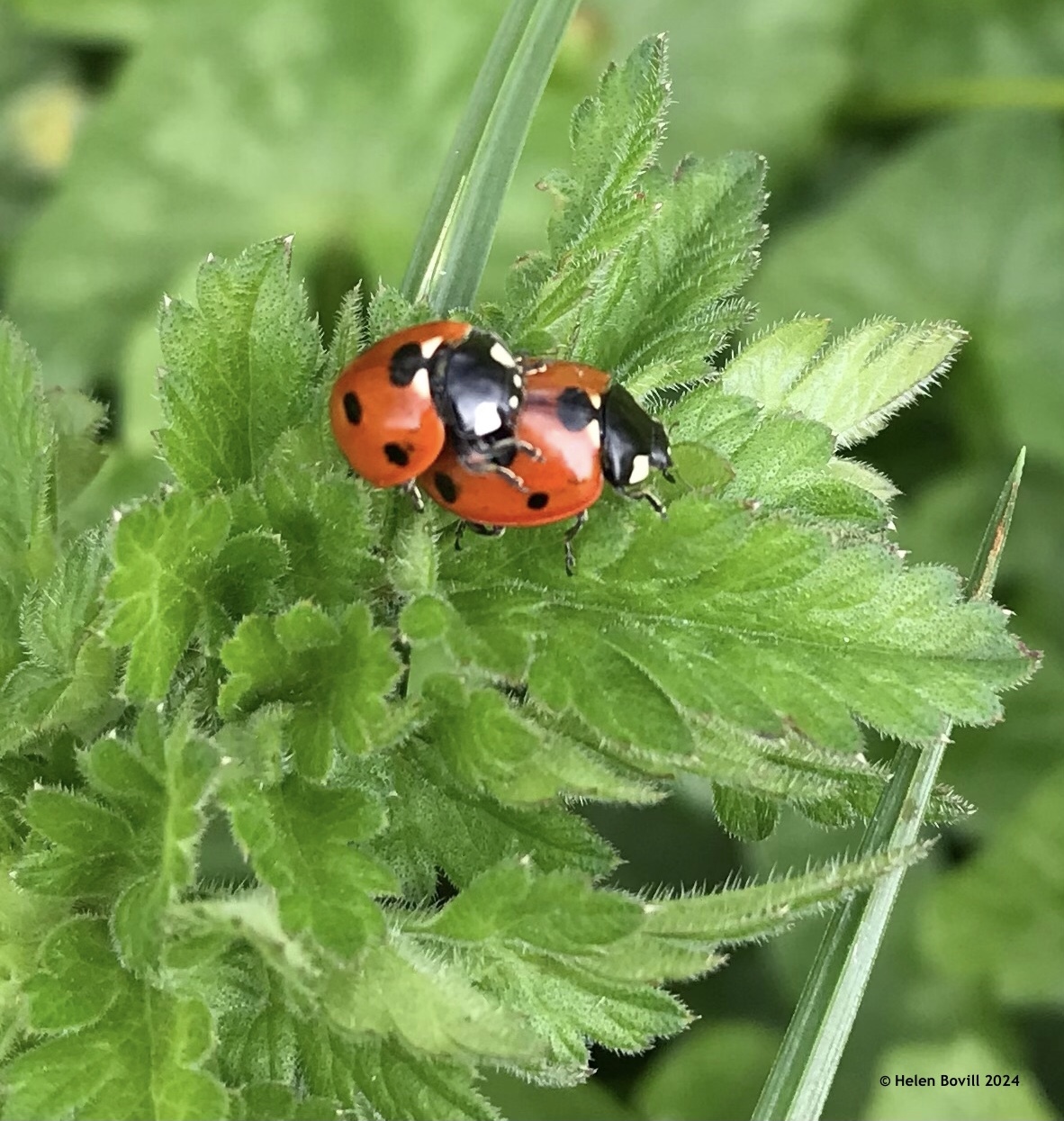
I also saw a Green Shield Bug.
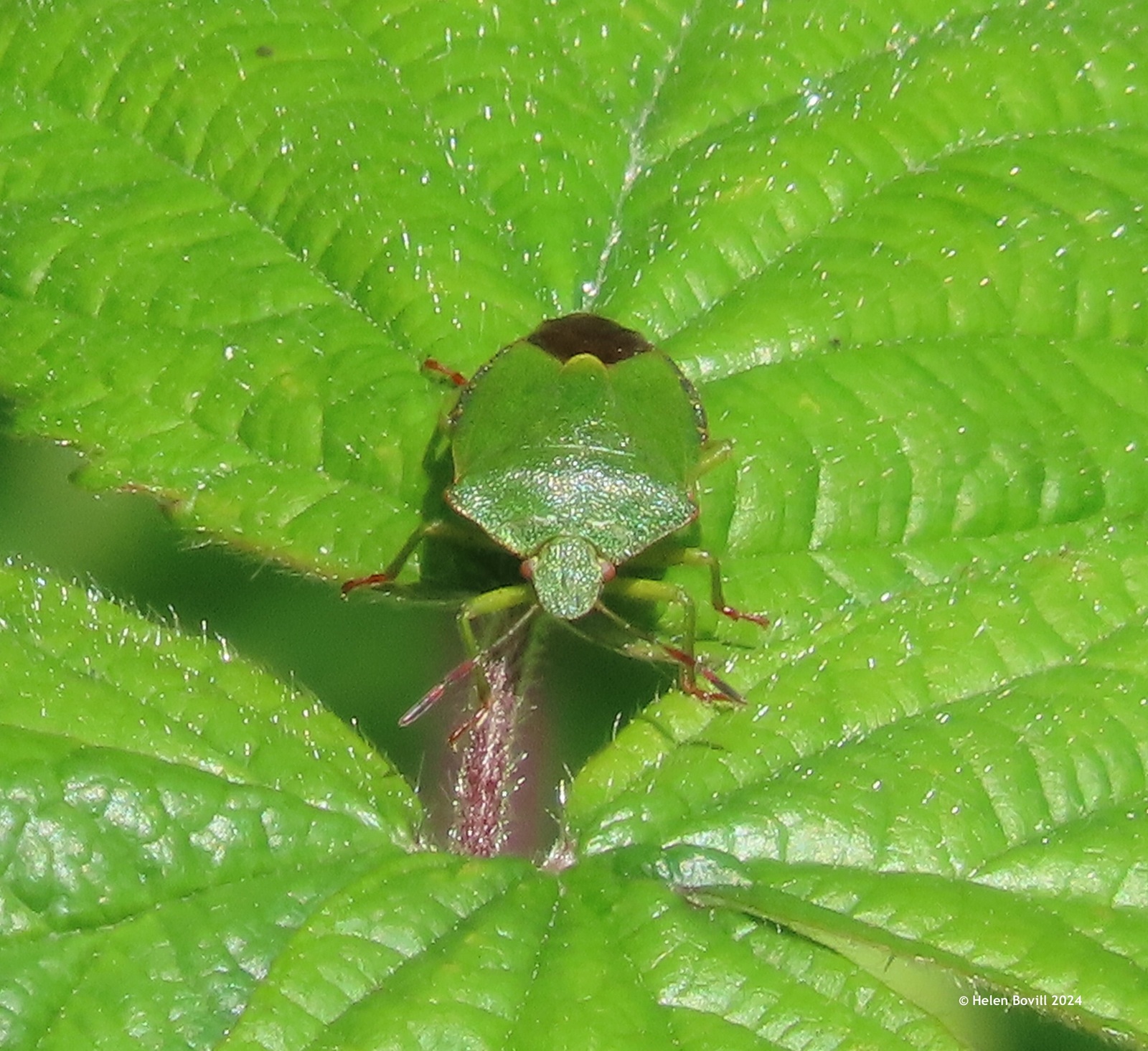
Plants
The iNaturalist challenge also included plants, and I enjoyed looking more closely at some of the many plants, large and small, that we have in the cemetery. Here are some of them – the Bluebells are at their peak just now.
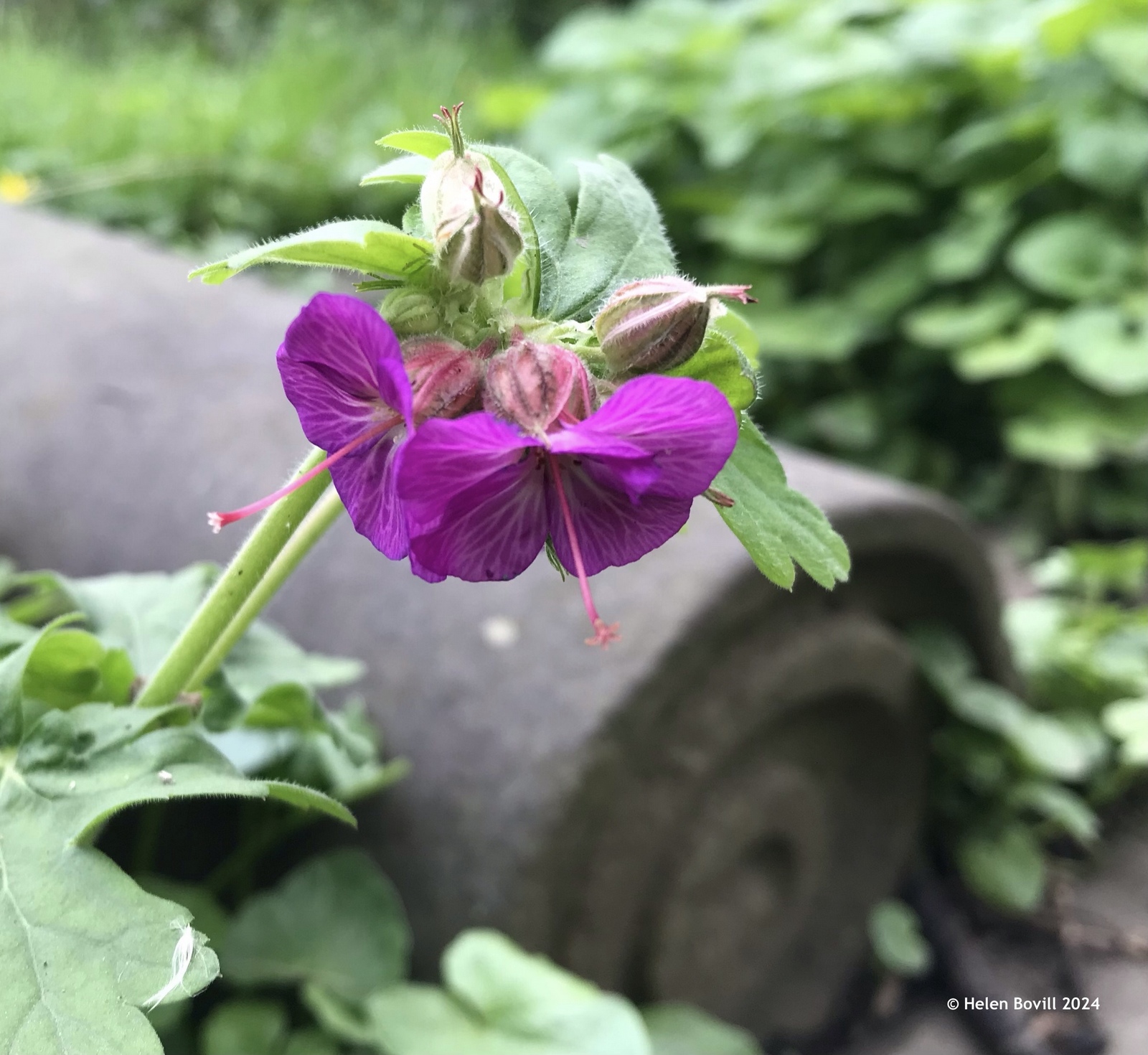
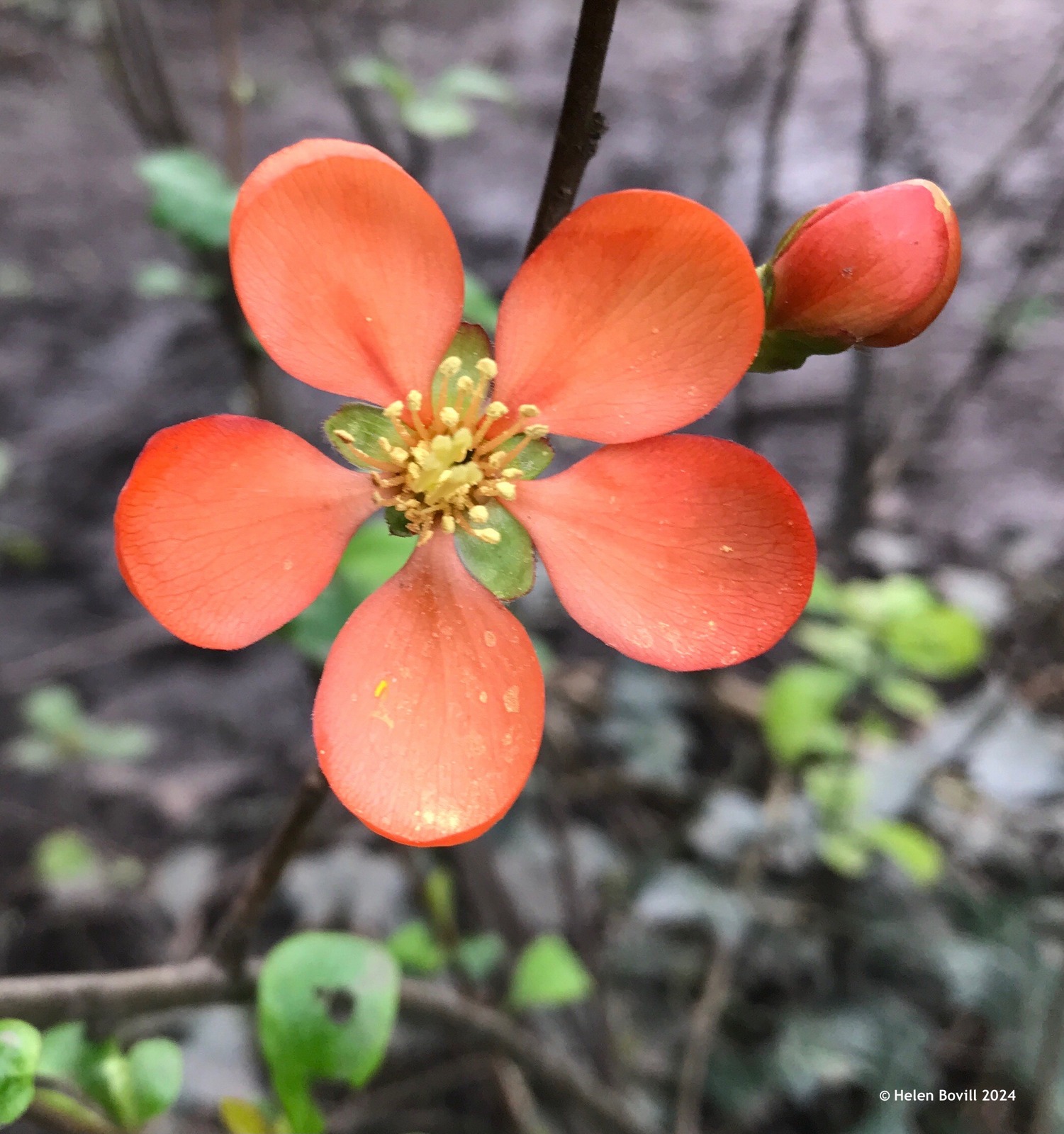


During the 4 days of the iNaturalist challenge, I saw nearly 100 different species of flora and fauna in the cemetery, and it could easily have been more as I missed some obvious ones. Everything was eligible, even the humble dandelion! And Hull as a city did extremely well in the overall scores at the end of the event. Please see the link at the end of my report for more information.
Conclusion
April was a month of mixed fortunes, weather-wise. There were some warm, sunny days but a much colder than average spell at the end of the month. There were rainy days and some extremely windy ones, resulting in some large branches falling across the footpaths. But the cemetery wildlife was thriving this month, and the very last day was very warm – warmer than average for the month.
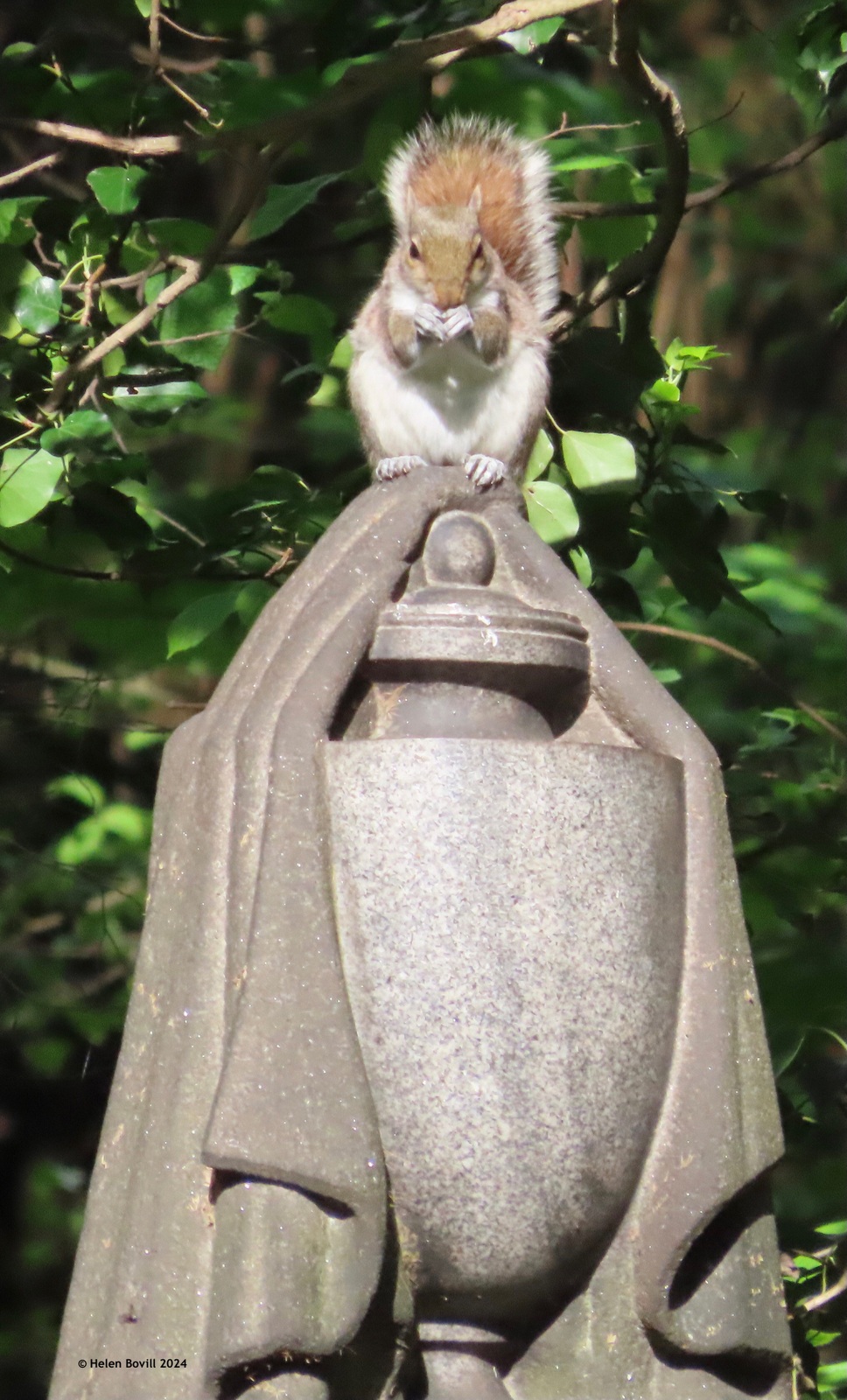
Link to iNaturalist’s City Nature Challenge –
City Nature Challenge 2024: UK Leaderboard · iNaturalist United Kingdom


